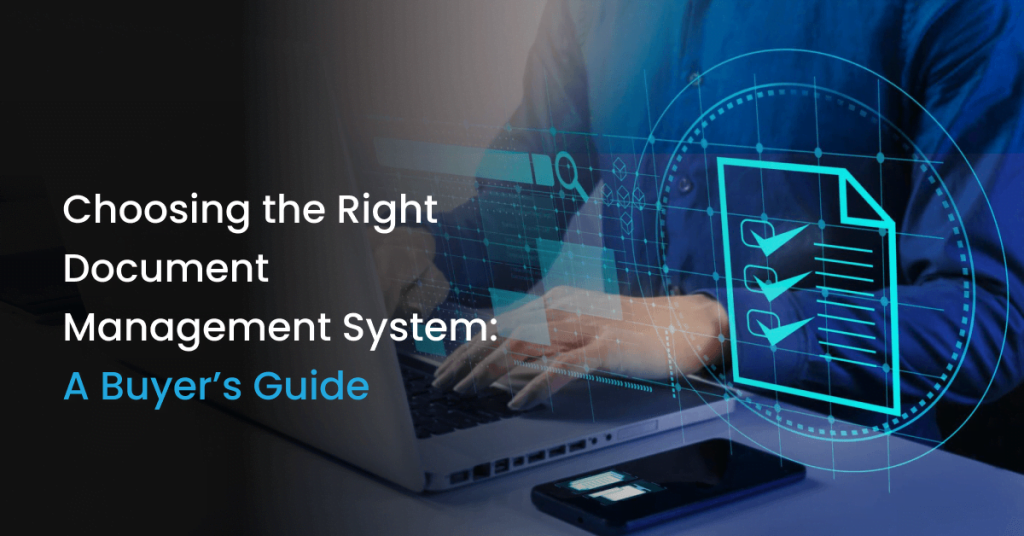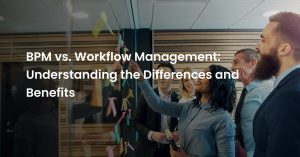
The business environment is leading to new exploration and exciting opportunities where digital transformation serves as a significant factor in meeting the demands of modern business. But with too much documentation to handle on a daily basis, organizations get stuck with meeting business objectives and instead focus on tasks that don’t lead to any tangible results. Assessing the amount of paperwork your employees do every day is directly proportional to the loss of productivity your organization is witnessing. How? From sourcing the right folder to indexing the content to rearranging them back on the shelf, papers are really a drawback in the growing business environment.
Imagine how an organization without paper would feel.
- There will be no document disorder.
- There will be no stack of files and folders.
- There will be no tension over losing important papers.
- There will be no necessity to file papers as per category.
- There will be no fear of data theft.
Without papers, how can an organization run?
Simple, the introduction of a document management system (DMS) can be a vital solution where you can capture, store and access any kind of information from anywhere. A paperless organization can seem daunting initially, but once you get used to the efficiency offered by a document management solution, the need for paper expenses will drop dramatically. Also, you can witness a rise in business operations with workflows kept transparent, free of error and free of loss of data.
This blog serves as a DMS buying guide on choosing the document management system by analyzing your business requirements, understanding the fundamentals of a document management system, the implementation procedure, and concluding on the best document management purchase.
Establishing Business Needs
Now, let’s first define your business requirements, as it would help shortlist the core components in selecting DMS that best fit your organization.
Every business runs on different objectives, but the aim has always been to be the best for customers. In their quest to satisfy user’s demands, organizations fail to notice what their businesses and employees are in need of. Assessing the functionality of a DMS heavily depends on what you aim to achieve with its integration. For example, if your business wants to monitor the accessibility of sensitive documents, then a DMS that offers role-based access and activity tracking should be your main focus in selecting a DMS. Likewise, let’s analyze your business prerequisites and enterprise conditions to land on the premier document management service provider.
- Looking for ways to improve productivity
- Want automatic tagging of documents?
- Need direct conversion of documents to digital files
- Want to provide access to employees on role-based
- Tired of version chaos
- Want to integrate multiple applications?
- Need scalable solution in case of business growth
For every of the above business mandates, there is an extensive feature available in the document management system. For example,
- To increase employee productivity, a document management system that has advanced search capabilities is preferably chosen, where retrieval of documents based on keywords, metadata and full-text search is done, reducing the need for manual search.
- If you are looking for the selected DMS to recognize text from a scanned PDF, then be sure to have Optical Character Recognition (OCR) in your document management software.
- If your organization uses many applications, like a CRM tool or an ERP solution, then get your DMS with enhanced integration facilities that let you access the application from the document management system.
- Also, if you want your sensitive documents to be secure, check for encryption mechanisms in your DMS to ensure your data is well protected before getting transferred.
Fundamentals to Know in a DMS
Another important aspect of this DMS buying guide is that there is another main attribute to check for before making a document management purchase. Verifying the type of document management software in regards to the hosting facility reduces the cost of the document management system. There are two types of DMS based on the hosting,
Cloud-Based:
Hosted on the cloud, the document management system offers less dependency for in-house IT professionals as the software provider takes care of everything, including initialization, installation and server management. If your organization is into remote operations, selecting DMS with cloud-based works well, where employees can connect from anywhere with an internet connection. Also, you can be free of implementation costs and storage expenses in case of business growth.
Server or On-Site Based:
Being hosted on your organization’s server takes up your IT infrastructure and will demand 24×7 monitoring from your IT team. It also ensures you look into the maintenance of DMS. One main advantage of holding DMS on your server is that you can have great control over the security, reducing your reliance on your service provider.
When it comes to a document management service provider, it is more likely a subscription model; where you can alter your customizations as your business demands and grows. Whereas, if you decide to host on your own, the expense spent right from the installation to the maintenance is so huge that you cannot have a change in software edits immediately. So choosing a document management service provider can be beneficial in many ways. Make your choices right and purposeful.
Implementation Strategies for a Seamless Document Management System Integration
It must now be clear why choosing a cloud-based document management solution can be beneficial for your organization. Make sure you do the following from your end to get the most from the document management system.
- Start a pilot project where you first define your business requirements and objectives for integrating a DMS.
- Access your organization’s document management needs, like the volume of documents handled on a daily basis, the kind of documents, and existing workflows and collaboration essentials.
- Once you are done with the above assignment, evaluate every DMS service provider based on the provided solutions, features and capabilities. If they match your organization’s requirements, go ahead with the document management purchase.
- Time for a discussion with your DMS provider on the customization of metadata fields, document templates, folder structures, access controls, and other settings to optimize usability and efficiency.
- When everything is sorted, it’s time for your employees to get trained for easy access to DMS. Get them familiar with the features and their capabilities. This will ensure they maximize the tool for their own benefit.
- Now establish governance policies like naming conventions, version control guidelines, access procedures, compliance requirements and security protocols. Also, make sure that they are communicated or documented to prevent further disagreements.
- In the pilot project, implement the selected DMS solution in a phased manner, starting with either role-based or a certain category of document migration.
- Monitor and measure the performance of the project in regards to user satisfaction, workflow management, security levels and other key performance indicators.
- Conduct periodic audits and share them with the team on how a document management system has enhanced their productivity and performance, as well as how the organization is driving decisions based on the outcomes.
This approach emphasizes that organizations can strategically implement and leverage document management systems that assist in streamlining dispersed piles of documents across the organization floor.
Final Check for the Right DMS Vendor
The final step in the DMS buying guide is to introduce your organization to document management service providers like SquareOne Technologies, who have been in the business for decades, empowering organizations like yours to achieve a paperless environment and also manage volumes of document inflow on a daily basis. With seasoned experts handling the business, you can be assured of the kind of dedication and commitment the team at SquareOne Technologies gives to your business needs. From assessing your firm’s requirements to strategically allocating the right capabilities of a document management system and providing round the clock support, SquareOne Technologies as a document management provider fits every checkbox listed above.
Wrapping Up
The guide on document management purchases comes to a conclusion, and we hope that every detail has been analyzed and dictated. Every detail listed ensures your organization and employees discard the system of utilizing paper and turn to a digital business that helps you meet modern business needs seamlessly and efficiently. If you need more information on document management systems, please refer to the blog, where you can get an in depth analysis of the features and benefits your organization will gain from them.
Get started by booking a demo with the team at SquareOne Technologies, and don’t delay the process of enhancing your organization with a tool that improves productivity, enhances security and scale business operations to new heights!

















